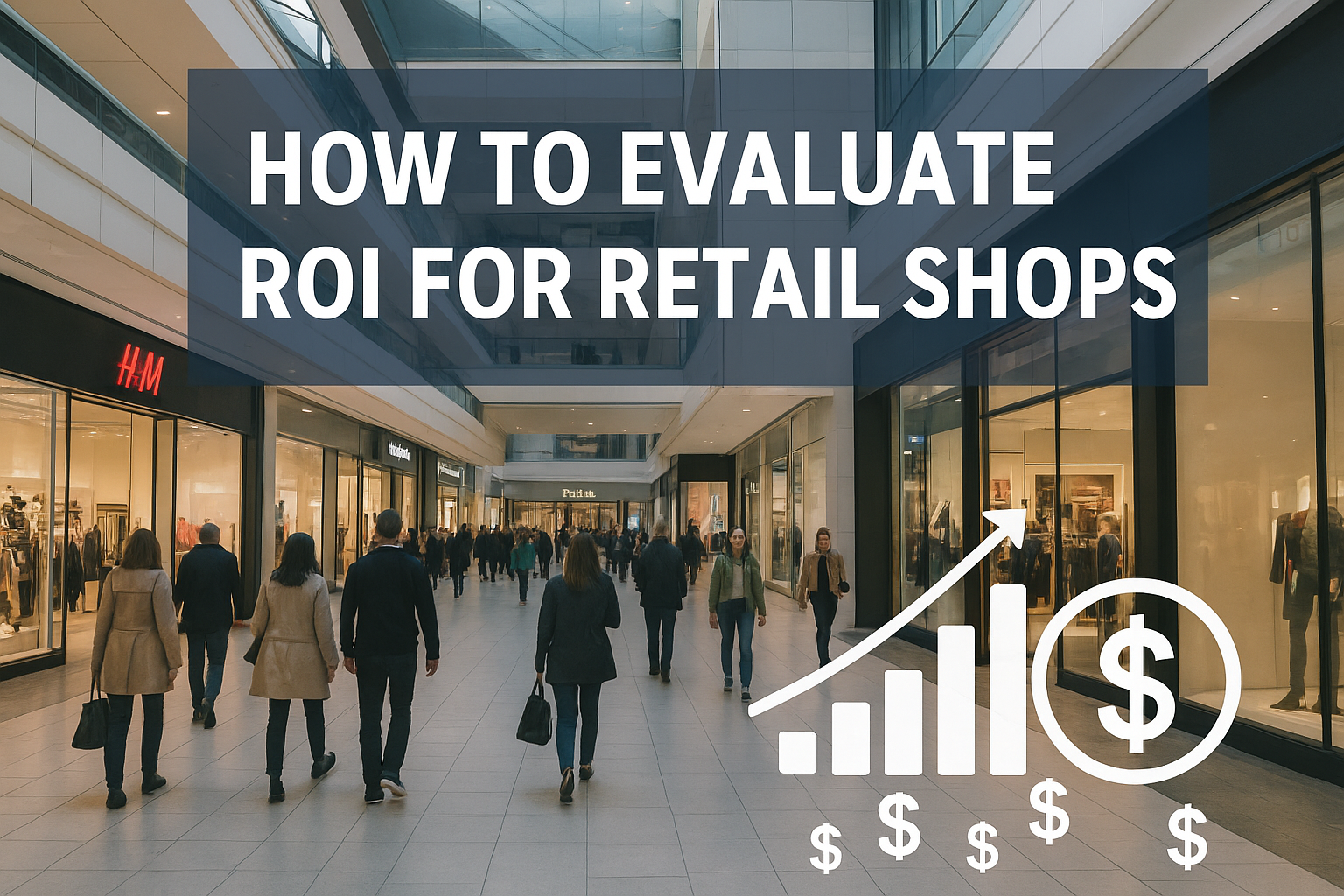
How to Evaluate ROI for Retail Shops
Author : Rahul | Posted On : 01 Nov 2025 | Last Updated On : 01 Nov 2025
How to Evaluate ROI When Buying Retail/Shop Spaces in Malls or High-Street Locations
The investment in retail property, whether they are in bustling shopping malls or in prime high-street areas, is a great way to earn a profit. Before making a choice, it is essential to examine the possibility of a ROI ROI. The right approach will guarantee steady rent earnings and long-term capital growth.
Importance of Location
t is the location that plays a major role in the overall success of an investment in retail. Locations that have a lot of foot traffic, such as malls that are anchored by big brands or bustling commercial avenues, are sure to attract many more shoppers. Knowing the patterns of people walking through the area, as well as the characteristics of customers as well and the buying habits within the vicinity is essential. Also, it is important to take a look at the nearby businesses. Although having too many identical stores could reduce profits but complementary stores may actually increase the flow of customers.
Rental Income Potential
The rental income is typically the most important source of ROI for retail property. Comparing the rents of similar properties around helps establish real goals. The lease terms also matter, and long-term leases that have reliable tenants lower the possibility of empty spaces and guarantee steady earnings. Escalation clauses, which increase rent as time passes, may increase the return. A diverse and stable tenant pool, particularly in high streets, can help maintain steady rent and improve the overall return on investment.
Capital Appreciation
In the short term, rental income can drive yields. Capital appreciation is crucial to long-term growth. Property in areas that are slated to be developed for infrastructure purposes, like Metro lines that are being constructed or commercial developments, usually has higher value growth. Similar to retail spaces that are located in malls and areas with a strong reputation, they are more likely to hold or grow the value of their properties over time. The condition and the age of the space are equally important. Modern, well-maintained buildings typically result in higher prices for resales.
Operational Costs
Operations costs are yet another aspect that could affect ROI. Costs for maintenance, utilities, as well as property taxes and marketing costs in some malls must be accounted for prior to the time of purchase. Although a property may have great rental prospects, the high cost of maintenance can be a drain on the profits. Understanding the expenses will help you make more accurate forecasts of net profits.
If you are an investor looking for expert advice, TrueAssets Consultancy offers expert advice and assistance in identifying profitable retail property investments.
FAQs
1.What is the best way to estimate ROI for retail properties?
ROI is (Annual Net Rental Income minus anticipated capital appreciation)/Total Investment*100.
2.Are high-street properties always more profitable than a shopping mall?
Not all the time; profit is based on the amount of foot traffic, mix of tenants, as well as operational expenses, more than just location.
3.What's the most suitable lease duration to take into consideration to evaluate ROI?
A minimum of 3-5 years is ideal to ensure an ongoing rent income.
4.How crucial is the selection of tenants for return on investment?
Very vital--good tenants decrease the risk of vacancy and increase long-term profit.
5.Do operational expenses have a significant impact on the ROI of your business?
Yes, maintenance, taxes and other ongoing expenses could decrease net earnings if properly managed.